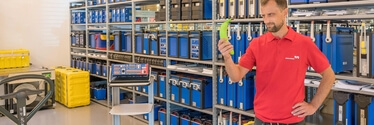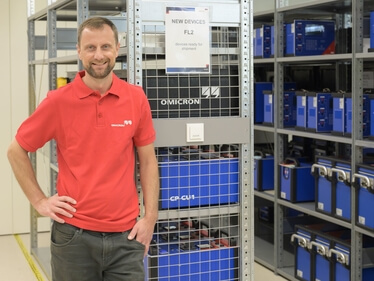
Does Anybody Like Green Bananas?
The fruit that’s offered in the supermarket is unripe but it’s ready to be consumed a few days after it’s been bought. This is due to long transport routes - bananas, for example, are harvested and delivered when they’re green and they only acquire their sweet aroma after they ripen. Is there anyone that doesn’t already know this?
Unfortunately, a similar procedure is being observed more and more when it comes to technically complex products: they’re brought to the market prematurely and therefore, they’re full of bugs. They only become fully functional later on via software updates or device revisions. This creates frustration, and rightfully so. In Germany this has led to the sarcastic expression, "the banana principle" (editor’s note: “perpetual beta”).
We think that customers should only accept testing solutions that have had time to mature. But what does that mean? Are continuous product care and necessary improvements the same? No, because it is important to distinguish whether
1. a functioning product is further improved via updates, e.g. the range of functions is expanded, or
2. a product was brought to market unfinished and buggy and therefore needs to be repaired.
The first case is desirable but the second one should be avoided. The best-case-scenario is having a product that functions smoothly from the very beginning and is maintained over a long period of time – only then can it really be referred to as "mature". The path that leads to this goal is not always easy, but it’s a challenge that we’re prepared for.
Here are two examples:

CIBANO 500
When CIBANO 500 was launched, its initial focus was enabling the common standard tests for medium and high-voltage circuit breakers to be performed quickly, safely and conveniently. Only the most basic functionalities were implemented deliberately in order not to have to make any concessions due to the time pressure in quality testing.
The foundation of the device was its 3-in-1 solution, i.e. an integrated switching time and motion analysis device, a coil and motor supply and a digital micro ohmmeter all in one housing. Through a lively and close exchange with our customers, we followed their suggestions for improvements and for example, we implemented a test for dead-tanks or GIS switches. Additionally, we developed accessories that made it possible to test complex switches with CIBANO 500 and perform motion analyses on them.

COMPANO 100
In order to meet the urgent need for an innovative single-phase test set, we introduced COMPANO 100 in 2017. It’s the world's first battery-powered solution for protection testing and primary and secondary injection. Due to a tight development schedule, we decided to do without a voltage output for the market launch, as it isn’t relevant for all of our customers. However, although we were pressed for time, we still wanted to be able react flexibly to customer’s requirements. So, we decided to offer the voltage output as an order option (V OUT), which we subsequently added a year later.
During the launch, we also introduced "COMPANO Ideas", a platform that gave customers the opportunity to submit suggestions and feedback that they’d like to discuss with the developers. In the meantime, many of the ideas have been implemented via software updates: For example, COMPANO 100 has been given its own AUX DC mode with a higher output power and soft keys can be redefined as needed. In addition, users can even perform selected calculations on the device before the output phase and thus completely without manual calculations.
Good to know: Our customers can always rely on the fact that all OMICRON devices have been thoroughly tested before shipment. This involves simulating specific limit situations in order to ensure that the devices meet their specifications in each and every case. A final visual inspection is also mandatory.

"I always ensure the impeccable condition of our testing equipment directly before delivery".
Pawel Najgeburski (logistics and shipping)